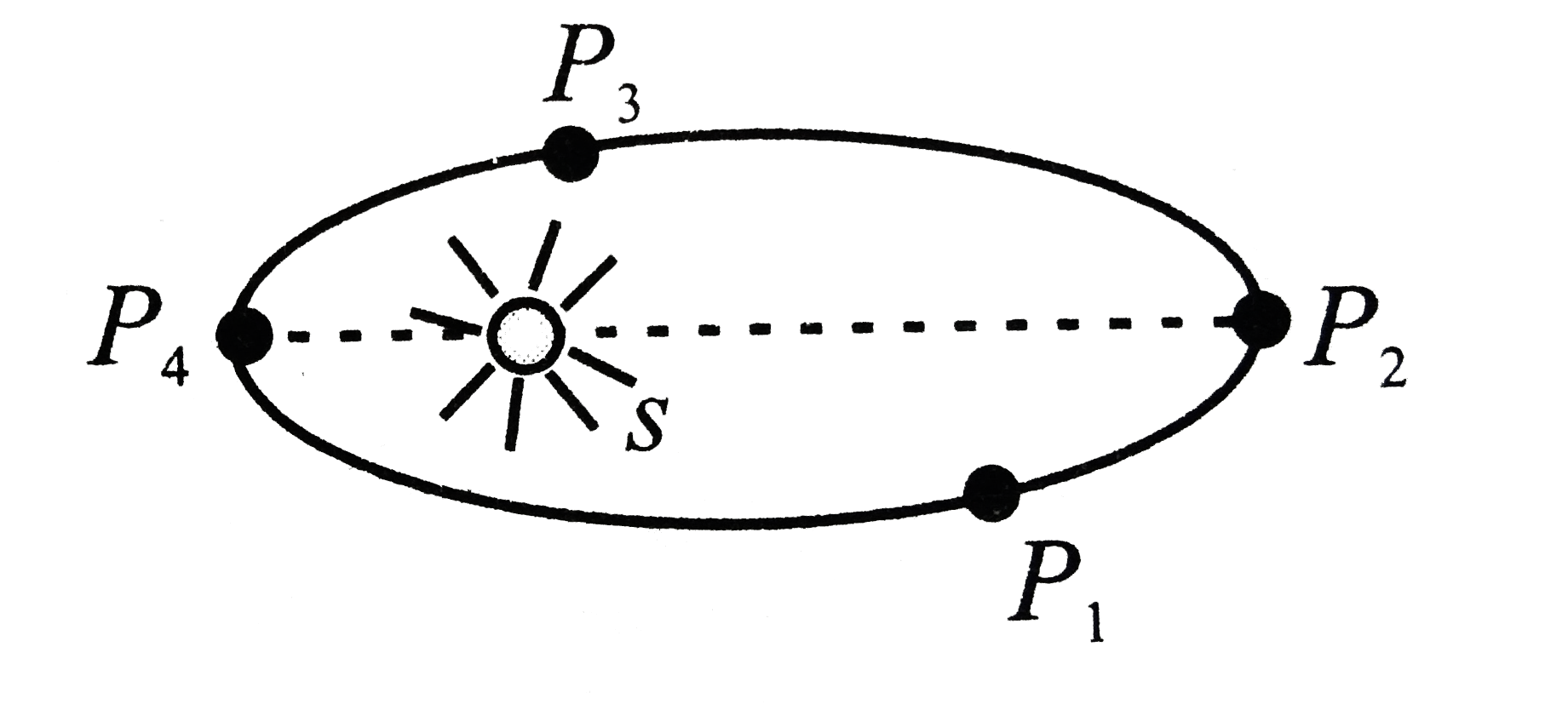A planet of mass m is moving in an elliptical orbit about the sun (mass of sun = M). The maximum and minimum distances of the planet from the sun are r1 and r2 respectively. The period of revolution of the planet wil be proportional to :
r3/21
r3/22
(r1−r2)3/2
(r1+r2)3/2
The correct Answer is:D
To solve the problem, we will use Kepler's Third Law of planetary motion, which states that the square of the period of revolution (T) of a planet is directly proportional to the cube of the semi-major axis (a) of its orbit.
1. Identify the semi-major axis:
The semi-major axis (a) of an elliptical orbit is the average of the maximum distance (r1) and the minimum distance (r2) from the sun. Therefore, we can express it as:
a=r1+r22
2. Apply Kepler's Third Law:
According to Kepler's Third Law, the square of the period (T) is proportional to the cube of the semi-major axis (a):
T2∝a3
3. Substitute the expression for a:
Now, substituting the expression for the semi-major axis into Kepler's Third Law:
T2∝(r1+r22)3
4. Simplify the expression:
Since (12)3=18 is a constant, we can simplify the expression:
T2∝(r1+r2)38
5. Remove the constant for proportionality:
We can ignore the constant factor when discussing proportionality:
T2∝(r1+r2)3
6. Take the square root to find T:
To find T, we take the square root of both sides:
T∝(r1+r2)32
Conclusion:
Thus, the period of revolution (T) of the planet is proportional to (r1+r2)32.
Final Answer:
The period of revolution of the planet will be proportional to (r1+r2)32.
---
The semi-major axis (a) of an elliptical orbit is the average of the maximum distance (r1) and the minimum distance (r2) from the sun. Therefore, we can express it as:
a=r1+r22
According to Kepler's Third Law, the square of the period (T) is proportional to the cube of the semi-major axis (a):
T2∝a3
Now, substituting the expression for the semi-major axis into Kepler's Third Law:
T2∝(r1+r22)3
Since (12)3=18 is a constant, we can simplify the expression:
T2∝(r1+r2)38
We can ignore the constant factor when discussing proportionality:
T2∝(r1+r2)3
To find T, we take the square root of both sides:
T∝(r1+r2)32
Thus, the period of revolution (T) of the planet is proportional to (r1+r2)32.
The period of revolution of the planet will be proportional to (r1+r2)32.
Topper's Solved these Questions
- GRAVITATIONBOOK - ALLENCHAPTER - GRAVITATIONEXERCISE - EXERCISE 2
26 Videos
- GRAVITATIONBOOK - ALLENCHAPTER - GRAVITATIONEXERCISE - EXERCISE 3
11 Videos
- GRAVITATIONBOOK - ALLENCHAPTER - GRAVITATIONEXERCISE - BOX-4
14 Videos
- GEOMETRICAL OPTICSBOOK - ALLENCHAPTER - GEOMETRICAL OPTICSEXERCISE - subjective
14 Videos
- KINEMATICS-2DBOOK - ALLENCHAPTER - KINEMATICS-2DEXERCISE - Exercise (O-2)
46 Videos
Similar Questions
The distance of the two planets from the Sun are 1013m and 1012m, respectively. Find the ratio of time periods of the two planets.
View SolutionA planet of mass m moves around the Sun of mass Min an elliptical orbit. The maximum and minimum distance of the planet from the Sun are r1 and r2, respectively. Find the relation between the time period of the planet in terms of r1 and r2.
View SolutionA planet of mass m revolves in elliptical orbit around the sun of mass M so that its maximum and minimum distance from the sun equal to ra and rp respectively. Find the angular momentum of this planet relative to the sun.
View SolutionThe distance of the two planets from the Sun are 1013m and 1012m, respectively. Find the ratio of time periods of the two planets.
View SolutionA planet of mass m moves along an ellipse around the Sun so that its maximum and minimum distances from the Sun are equal to r1 and r2 respectively. Find the angular momentum M of this planet relative to the centre of the Sun.
View SolutionA planet of small mass m moves around the sun of mass M along an elliptrical orbit such that its minimum and maximum distance from sun are r and R respectively. Its period of revolution will be:
View SolutionA planet of mass m is in an elliptical orbit about the sun (m << Msun) with an orbital period T. If A be the area of orbit, then its angular momentum would be:
View SolutionA planet is moving round the sun in an elliptical orbit as shows. As the planet moves from A to B

View SolutionFigure shows a planet in an elliptical orbit around the Sun S. Where is the kinetic energy of the planet maximum?

View SolutionA planet of mass m moves along an ellipse around the sum of mass M so that its maximum and minimum distances from sum are a and b respectively. Prove that the angular momentum L of this planet relative to the centre of the sun is L=m√2GMab(a+b)
View Solution
